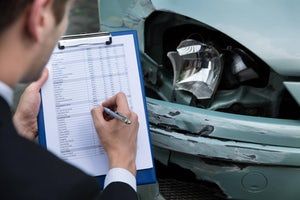
The brisk air and flurries may have some drivers dreading the roads this winter season, while others are so accustomed to the weather that driving in the snow is now second nature.
Regardless of your driving experience in winter, road conditions are not something to take lightly. Each year, 800 people die in winter-related motor vehicle crashes due to snow, sleet and freezing rain. When you consider the additional fatalities over the holiday periods of Christmasand New Years — often due to alcohol-related crashes after parties and gatherings—winter is truly a dangerous time on the road.
Certain areas of the country have it worse this time of year and some types of claims are more common in early winter than later in the season. Depending on the severity of storms, an increase in weather-related accidents during the winter season may result in higher insurance premiums in the spring, once insurers realize the full effect of all those filed claims.

Here are some winter preparation tips for car owners. Follow these steps to stay safe and avoid the hassle of filing a claim:
BEFORE SNOW ARRIVES
1. Prior to the first blizzard, make sure you have the appropriate coverage for your vehicles. Now is a good time to double check that your cars meet your state coverage minimums and that you have the liability, collision and comprehensive insurance that is right for you. Check and make sure that your deductible is an amount you can afford to pay and talk to your agent if you need to make any modifications.
2. If you own a car that you only drive seasonally, you may decide to reduce your auto insurance to save a little money during the winter months. While this can be a good option for a convertible that is in storage and won’t be driven — you won’t need collision or liability insurance for it — you’ll likely still want comprehensive coverage. Comprehensive insurance will protect your vehicle from weather-related damage that may still occur while it’s parked — destruction due to falling trees, ice, hail, snow or flooding. It may also be helpful to tell your insurer where your vehicle is parked as that could affect the rate you pay.
3. If you don’t have roadside assistance, now may be a good time to purchase it. The add-on coverage is typically inexpensive and can definitely be worth it during the cold winter months. If your vehicle skids off the road or you’re in need of towing services, roadside assistance will offer aid so you aren’t left stranded.
4. With the holiday season, you may also want to consider whether or not your insurance covers theft of personal items in your vehicle. If you’ll be traveling long distances with a lot of expensive, holiday presents for family or friends, this may be especially important. Typically, comprehensive coverage will insure against theft but usually only on features installed in your vehicle, such as your car’s radio or navigation system. Homeowners' or renters' insurance will usually cover personal items, but now may be an ideal time to double check if you plan to travel a lot this season.
5. The beginning of the winter season is a good time to bring your vehicle in for a tune-up. Check for any routine maintenance services and take a look at your tire treads as those will be important on icy roads. Ask your mechanic to check your battery and cooling system as well. While it’s a smart idea to bring your car in at the start of every season, it’s especially important during the winter when a breakdown could potentially leave you stranded in unsafe temperatures.
IN THE DRIVEWAY

6. While your car is still in the safety of your garage or driveway, check your tire pressure. Under-inflated tires increase the amount of time it takes you to brake, lead to difficulties in steering and wear at a faster rate than properly inflated tires. In cold weather, air contracts and that maycause your tires to lose their pressure so it’s good practice to check your tire pressure frequently during the winter months.
7. Check your windshield washer fluid and wipers before you get on the road as low fluid or worn wiper bladescould affect your visibility on the road. It’s much easier to do this before driving than itis to search for a service station through a blurry windshield.
8. Keep an ice scraper and shovel in the car. It may be best to make sure both are plastic to avoid scratching the car’s exterior or the windshield. If there’s a lot of ice on the windshield, keep the car running in the driveway as you clear the snow to help melt the ice. Remember to never pour hot water on the windshield as that may lead to shattered glass.
9. Winterize your vehicle by putting a bag of sand, salt or kitty litter in the car’s trunk. You can use it for traction by pouring it under the car’s wheel if you do get stuck in the snow and the added weight to the car will improve your traction if you’re in a rear wheel drive vehicle.
10. Clear all the snow off of your vehicle before driving. Snow on the car’s roof or in the truck bed can fall onto your windows or be picked up by the wind as you drive, impacting your visibility and the visibility of other drivers.
11. Always check your vehicle’s tailpipe to make sure that it is free of snow before driving. Carbon monoxide poisoning is dangerous and you never know if packed snow is blocking your car’s exhaust pipe after a heavy storm.
ON THE ROAD
12. During the winter months, drive slower than usual. Everything takes longer on snowy roads including accelerating, braking and turning. Give yourself time to react by driving slowly. Not only are the roads narrower due to snow banks, which may cause additional blind spots, but you never know where black ice may be.

13. Know your vehicle’s brakes. If you have anti-lock brakes and need to stop quickly, you’ll want to press firmly on the brake pedal and keep the weight there until the vehicle stops. If you don’t have ABS brakes, keep your heel on the floor of the car and use the ball of your foot to pump the brakes by applying smooth and steady pressure, before letting off slightly and repeating. This will prevent non-ABS brakes from locking.
14. If your vehicle skids or spins out despite your safe and slow driving, take your foot off the accelerator and brake. Steer gently in the direction you want to the vehicle to go and once you regain control, press the brakes or accelerator lightly. Braking or accelerating quickly can make the skid worse.
15. If one of your tires does get stuck in the snow, don’t continuously hit the gas pedal. The spinning of your tires won’t help and will likely only get stuck further. Use the sand, salt or cat litter in your vehicle to create additional traction.
16. In the winter months, keep your vehicle’s gas tank at least half full, especially on longer trips. You never know when you may need fuel or need to use the car’s heater for an extended period of time to stay warm.
17. Always drive with your headlights on. While this is a good idea all year long, it’s especially important in the darker months of winter. Be sure to keep them clear of ice, dirt and snow for better visibility.
18. Remember to drive based on the current road conditions. Speed limits are made for dry roads, so there is no pressure to keep up with the speed that you’d drive at on a beautiful spring day. If visibility is bad, don’t drive unless you absolutely have to. Watching the snow from inside will be much more enjoyable.
Driving in the winter isn’t easy but the more knowledge and experience you have, the better off you’ll be. Follow these tips to keep yourself and your car prepared for the winter weather. Now, go enjoy the winter wonderland and stay safe out there.
ARTICLE POSTED WITH PERMISSION FROM ORIGINAL AUTHOR: Seth Birnbaum is CEO of EverQuote, an online independent insurance marketplace. Connect with him on LinkedIn.











